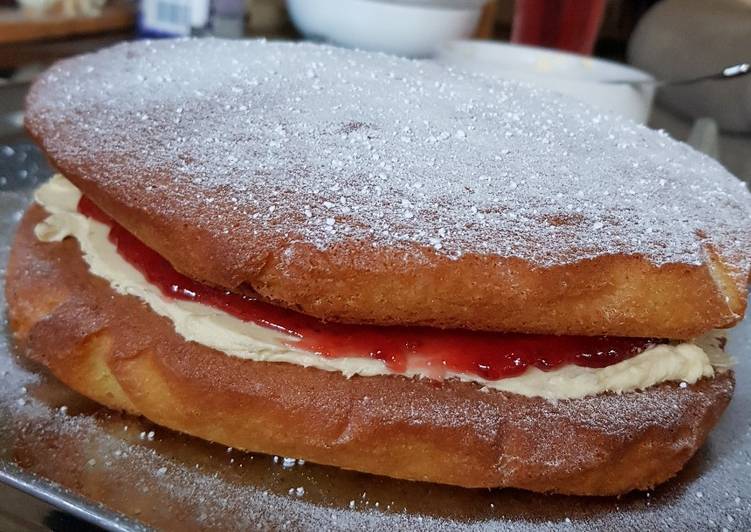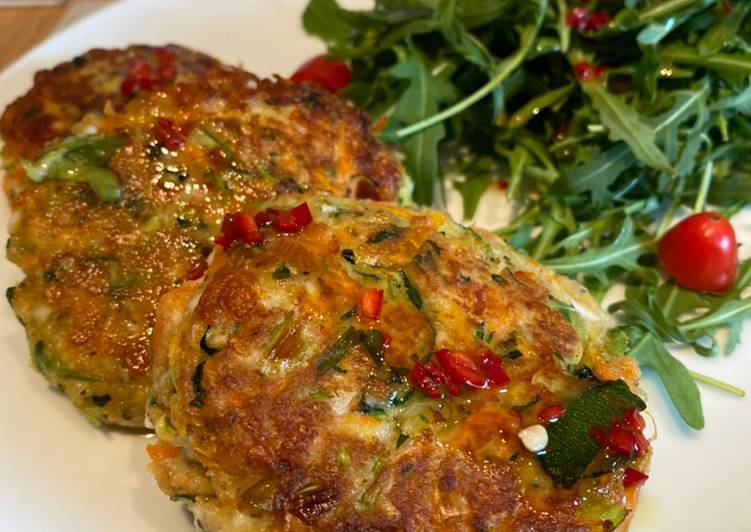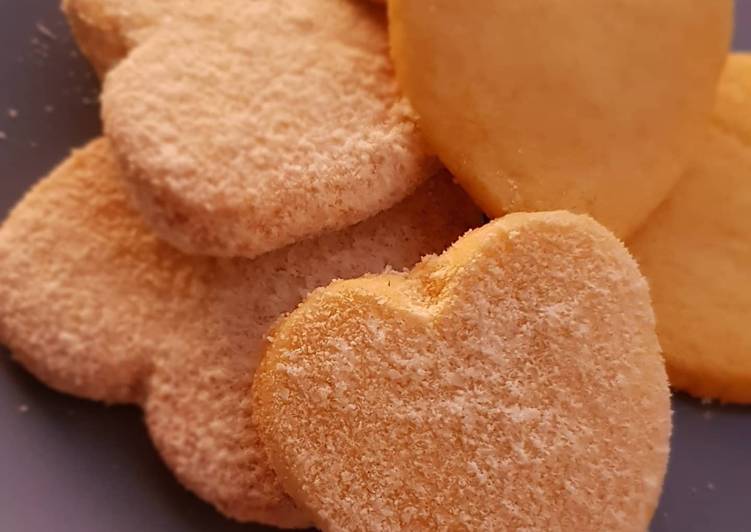
Hey everyone, it is me again, Dan, welcome to our recipe site. Today, I’m gonna show you how to prepare a special dish, victoria sponge cake. One of my favorites. This time, I am going to make it a bit tasty. This will be really delicious.
A Victoria Sponge was the favorite sponge cake of Queen Victoria, and has since become a tried-and-true recipe for tea-time sponge cakes. Victoria Sponges are generally filled with jam, and are undecorated on the top, but you can serve each piece with a dollop of whipped cream, or shake some powdered sugar over the top if you'd like. Probably the most iconic British cake, a good Victoria sponge should be well-risen, moist, and as light as air. Serve dusted with sifted confectioners' sugar.
Victoria sponge cake is one of the most favored of current trending meals on earth. It is easy, it’s fast, it tastes delicious. It’s appreciated by millions daily. Victoria sponge cake is something which I have loved my whole life. They are nice and they look fantastic.
To begin with this particular recipe, we must first prepare a few components. You can have victoria sponge cake using 9 ingredients and 10 steps. Here is how you can achieve that.
The ingredients needed to make Victoria sponge cake:
- Get Caster sugar
- Prepare Butter
- Prepare Large eggs
- Take Self raising flour
- Prepare Baking powder
- Prepare Milk
- Get Icing sugar
- Take Vanilla extract
- Make ready Strawberry jam
If you use social media, remember to share your #royalbakes ! The Victoria Sponge was named after Queen Victoria, as reputedly it was her favorite cake. Anna, the Duchess of Bedford, who has been given credit for introducing the charming art of the afternoon tea , was a lady in waiting to the queen who quickly adopted the custom of serving sponge cakes as part of the tea. Before the Victoria sponge, British sponge cakes were leavened only by eggs hand-whisked with sugar until foamy and thick.
Steps to make Victoria sponge cake:
- Preheat oven to 170°c fan
- In a large mixing bowl add 200g caster sugar and 200g softened butter. Whisk until pale and fully combined, make sure not to over whisk or the butter can split.
- Add 4 eggs to the bowl and whisk until fully combined. Again be careful not to over whisk.
- Sift 200g self raising flour and 1 tsp baking powder into the bowl. Gently fold into the mixture until fully combined. Be as gentle as you can and take your time. Air is the key to the cake being fluffy.
- Add 2 tbsp of milk and 1 tsp vanilla extract to the bowl and gently fold it into the mixture.
- Line two 20cm sandwich tins with greaseproof paper. Gently divide the mixture between the two tins as evenly as you can and smooth out.
- Put the tins into the oven and bake for 20 minutes until golden and a skewer or knife comes out clean.
- Take the cakes out of the tins and place on a wire cooling rack. Leave to cool completely.
- For the buttercream: In a large bowl add 100g softened butter. Sift 140g icing sugar onto the butter. Whisk them together until smooth. Add 1/2 tsp vanilla extract and mix.
- Spread the buttercream over one of the cakes. Then spread 170g of strawberry jam on top of the buttercream and sandwich the other cake on top. Dust the top with icing sugar and serve.
Anna, the Duchess of Bedford, who has been given credit for introducing the charming art of the afternoon tea , was a lady in waiting to the queen who quickly adopted the custom of serving sponge cakes as part of the tea. Before the Victoria sponge, British sponge cakes were leavened only by eggs hand-whisked with sugar until foamy and thick. For the final technical challenge Mary Berry asked the bakers to make this simple sponge with homemade jam and buttercream - without a recipe. This Victoria sandwich recipe by Mary Barry is. But Tammy's favorite dessert by far was Victoria sponge cake.
So that’s going to wrap it up with this exceptional food victoria sponge cake recipe. Thanks so much for your time. I’m sure you can make this at home. There’s gonna be interesting food in home recipes coming up. Don’t forget to save this page in your browser, and share it to your family, colleague and friends. Thank you for reading. Go on get cooking!

